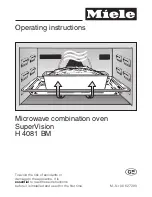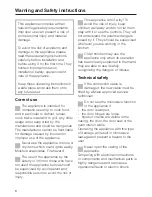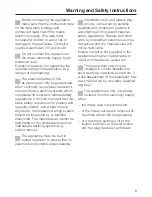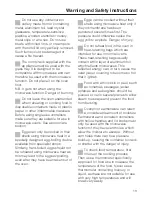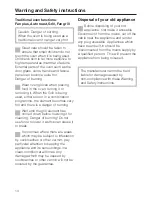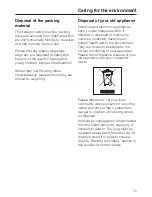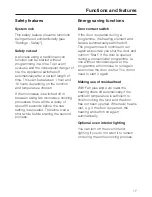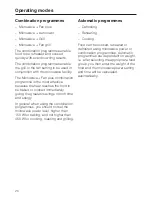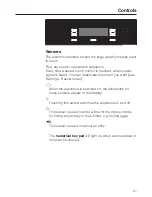
Before connecting the appliance,
make sure that the connection data
on the data plate (voltage and
connected load) match the mains
electricity supply. This data must
correspond in order to avoid risk of
damage to the appliance. Consult a
qualified electrician if in any doubt.
Do not connect the appliance to
the mains electricity supply by an
extension lead.
Extension leads do not guarantee the
required safety of the appliance (e.g.
danger of overheating).
The electrical safety of this
appliance can only be guaranteed
when continuity is complete between it
and an effective earthing system which
complies with local and national safety
regulations. It is most important that this
basic safety requirement is present and
regularly tested, and where there is
any doubt, the household wiring system
should be inspected by a qualified
electrician. The manufacturer cannot be
held liable for the consequences of an
inadequate earthing system (e.g.
electric shock).
The appliance must be built in
before operation to ensure that no
electrical components are accessible.
Installation work and repairs may
only be carried out by suitably
qualified and competent persons in
accordance with local and national
safety regulations. Repairs and other
work by unqualified persons could be
dangerous and the manufacturer will
not be held liable.
Ensure current is not supplied to the
appliance until after maintenance or
repair work has been carried out.
This equipment may only be
installed in mobile installations
such as ships, caravans, aircraft etc. if
a risk assessment of the installation has
been carried out by a suitably qualified
engineer.
The appliance is only completely
isolated from the electricity supply
when:
– the mains fuse is disconnected,
– or the screw-out fuse is removed (in
countries where this is applicable),
– or it has been switched off at the
isolator switch or at the wall socket
and the plug has been withdrawn.
Warning and Safety instructions
9

